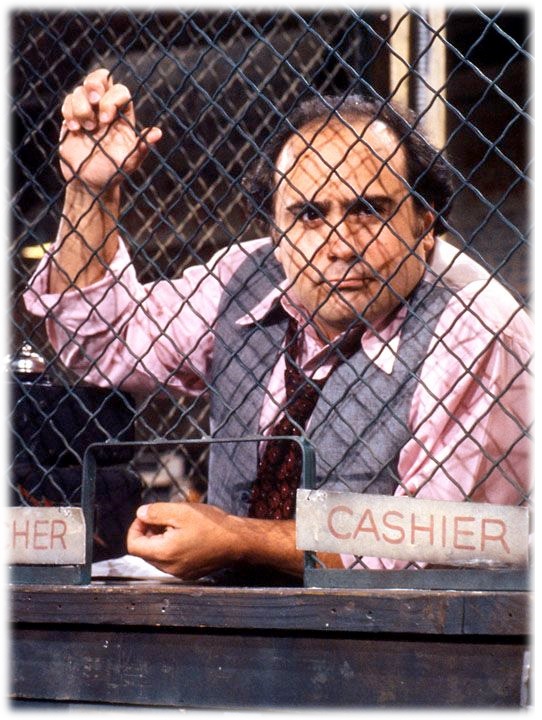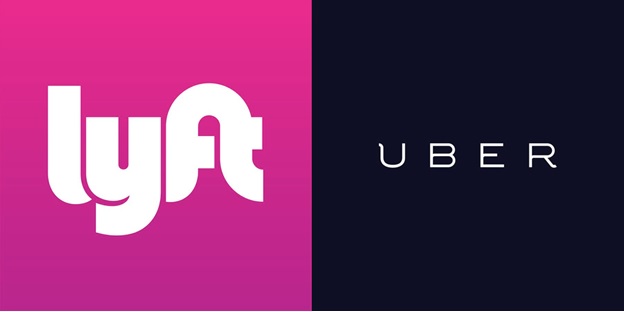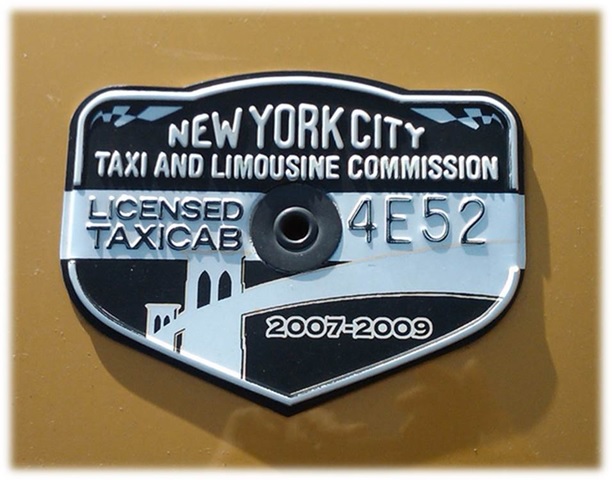As you can imagine, I spend more than a little time in taxi cabs during the course of the year. Sometimes from the back seat of a cab, I’m on the phone or working email. But at other times, I’ll converse with the cabbie.
If you’ve asked the person driving your cab “How’s it going?” lately, chances are the response was not a good one. Most in the taxi business these days are feeling intense competitive pressure from mobile ride companies Uber and Lyft.
Here are typical quotes from taxi drivers these days:
“Business is terrible. Uber and Lyft are really hurting us.”
“It’s not fair.”
“The government should step in and stop those guys.”
“They’re killing our business.”
From my vantage point as a paying passenger, I’m not sympathetic. Since the beginning of time, cab companies have had a monopoly on auto transportation when you’re on business or on vacation. And that lack of choice has often translated to a less-than-great experience.
Taxi cabs are not always clean, drivers can be rude, ambivalent, or on the phone the entire ride. And the journey itself can be a precarious one, especially in bigger metros with lots of traffic. In some cities, the call for a taxi can mean longer than promised wait times, and occasionally even a frustrating no-show.
Now compare that with services like Uber and Lyft. They each have a great user interface in the form of an app that allows customers to push a couple of buttons that will – in most cases – send a clean car to pick you up within five minutes. You can track your car via the app, and communicate with the driver. The rates are cheaper, and you have a sense of accountability because you can rate your driver – and he or she can rate you.
In short, both Uber and Lyft have taken an experience that used to be mediocre, and at times, frustrating, and turned it into a positive and successful transportation event.
How did the taxi industry get victimized by these modern mobile services? Their system was built on a model that depended on regulated scarcity. And in many markets, that meant a high premium on a taxi medallion – the permit drivers need to pay for in order to have the right to drive a cab.
The system is predicated on the idea that not everyone can legally drive a cab. The medallion system put a high tariff and barrier to entry on keeping the number of cabs limited. And the bigger the city, the more expensive these medallions ran. In 2015, USA Today reported that a just a couple of years back, the median price for a medallion in Chicago was north of $350,000. They’re not worth anywhere near that price today.
For decades, medallions were an annuity – great investments that guaranteed wealth. In fact, smart and savvy businessmen collected a lot of them in order to build a wealth base. The most extreme example may be Evgeny Freidman who holds 900 medallions, but has been embroiled in a legal battle with Citibank. At their peak, medallions in New York sold for as much as $1.2 million, but now they’re dropping in value, making it hard to unload them.
Freidman and other taxi entrepreneurs were geniuses, but now find their empires disrupted, thanks to Uber and Lyft.  Now anyone with a Prius and a little free time can become the equivalent of a taxi driver in cities all over the country and at more place around the globe. An industry that thrived on regulated scarcity and exclusivity now finds itself with disruptive competition that is growing by leaps and bounds.
Now anyone with a Prius and a little free time can become the equivalent of a taxi driver in cities all over the country and at more place around the globe. An industry that thrived on regulated scarcity and exclusivity now finds itself with disruptive competition that is growing by leaps and bounds.
If this sounds like the broadcast radio industry to you, then consider this post a cautionary tale. Owning a radio station is still an immensely profitable endeavor, but the price of “a stick” has most certainly dropped in recent years, a major reason why some radio companies find themselves wallowing in debt. The challenge to radio owners is to keep their local brands healthy and robust. And as the taxi industry has learned the hard way, it is essential to provide a great user experience.
Back in 2013, I interviewed Walter Naeslund, the head of a Swedish ad agency ironically named Honesty. We talked about radio’s place in the new digital ecosphere, and he put it this way:
“The era where limited frequency space provided barriers of entry is coming to an end. Make the most of the time you have left to build really strong brands and addictive content and you’ll have a better chance of bringing your listeners with you into the open infrastructure era where content and brand will be your only assets.”
In the world of broadcast radio, the end of regulated scarcity has led to new mega-competitors like Sirius/XM, Pandora, and Spotify. It is no longer essential to have an FCC license to build a brand, because anybody with a laptop and a microphone can create a “radio station.”
 At a Convergence conference a few years ago, Gartner’s Thilo Koslowski talked about broadcast radio’s crumbling dashboard monopoly by noting, “There’s a hole in the fence.” From apps on your phone to satellite radio to embedded entertainment, they all conspire to create new competitive pressures for hometown radio stations.
At a Convergence conference a few years ago, Gartner’s Thilo Koslowski talked about broadcast radio’s crumbling dashboard monopoly by noting, “There’s a hole in the fence.” From apps on your phone to satellite radio to embedded entertainment, they all conspire to create new competitive pressures for hometown radio stations.
So the next time you jump in a cab, take note of the user experience, the look and feel of the car and driver, and think about how it feels to do business within this rapidly changing system. And if you haven’t done so already, open up an account on Uber or Lyft, and experience what it’s like to mix new technology with a paid transportation service.
Then think about what your traditional radio brand might focus on in a world where the barrier to entry has greatly lessened. Here’s a suggested list of the new best practices:
Value customers – The taxi industry has taken passengers for granted for decades. Now customer service matters in a big way, especially to Uber and Lyft customers who appreciate the ability to rate drivers and the overall experience. It is essential to let the existing cume know they are dearly valued.
Don’t act like you’re the only game in town – Along the same lines, it is critical to always welcome customers/listeners, provide them with great service, and let them know you care. This means answering phones, acknowledging them socially, and even showing them your audience research so they can see how you’re better than your competitors. There is no place for arrogance in the new world of radio.
The bar has been raised on service – In a world where everything is rated – from books to restaurants to etailers on Amazon, consumers have become more focused on a positive experience. Yet, most taxi companies never bothered to think about customer service, and come to think of it, most DJs and programmers weren’t taught that way either. It’s one thing to know your way around town if you’re a taxi dirver or how to create great Selector logs if you’re a radio programmer. It’s another thing to truly understand how to take care of, maintain, and service an audience.
Keep up with the digital times – One of the starkest differences between Uber or Lyft and the Sunshine Cab Company is technology. In many cases, that may be the case with broadcast radio and its pure-play and satellite competitors, too. How is your station’s digital experience, your app, your social media pages, your texting platform, and the ways in which your audience connects with you? As technology matures, your brand needs to at minimum keep pace.
Do what you say you will do – We have all been stranded by taxis or not picked up when promised, and it’s not fun. So for radio, living up to commitments, following through, and making good on promises are key to building a level of trust and loyalty. Consumers become hooked on Uber when the experience is reliable, consistent, and pleasant. Radio has the ability to make that happen each and every day. But it takes work and focus to pull it off.
Think local – Here’s where radio can shine, and where cabbies don’t have the edge over their predators from Uber and Lyft. Knowing the local market and being an ambassador is an advantage, whether you’re in Jacksonville or Jackson Hole. Broadcast radio can go up against national and global competitors with a better, warmer, and more supportive local experience.
Learning from other industries, and how they’ve fared is a key to surviving and thriving in an increasingly precarious environment where regulated scarcity is rapidly becoming a thing of the past.
So where to?
- What To Do If Your Radio Station Goes Through A Midlife Crisis - April 25, 2025
- A 2020 Lesson?It Could All Be Gone In A Flash - April 24, 2025
- How AI Can Give Radio Personalities More…PERSONALITY - April 23, 2025







Stellar read guys, I sent it to my team. Just because a business was there “first” doesn’t mean it was there “best”
Right you are, Dave. Thanks for the kind words.
There are still some barriers. Consider the latest Copyright Board rates and how it shut down Live365. That alone will buy terrestrial signals more time.
I’m totally in agreement that changes at the fundamental level MUST be made to most broadcasters for them to continue, especially in today’s pump and dump markets and stations too quick to flip their format, thus ditching any previous branding (and likely, relevance) that so much work went into.
Appreciate the comment. We have to take care of these brands, and by extension, the industry.